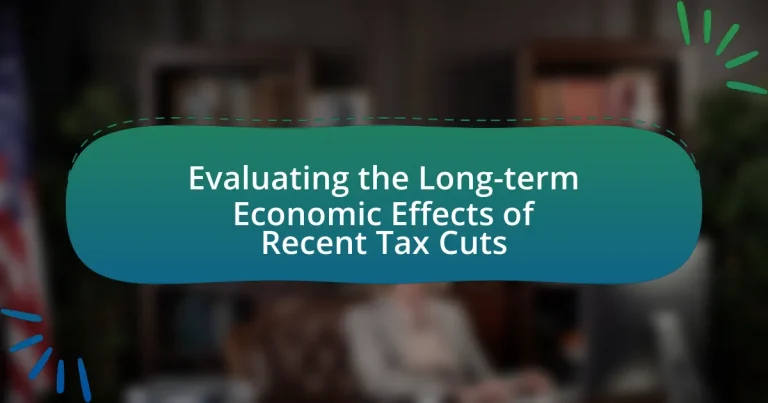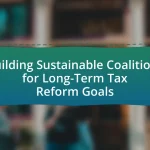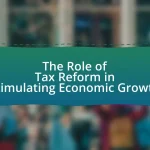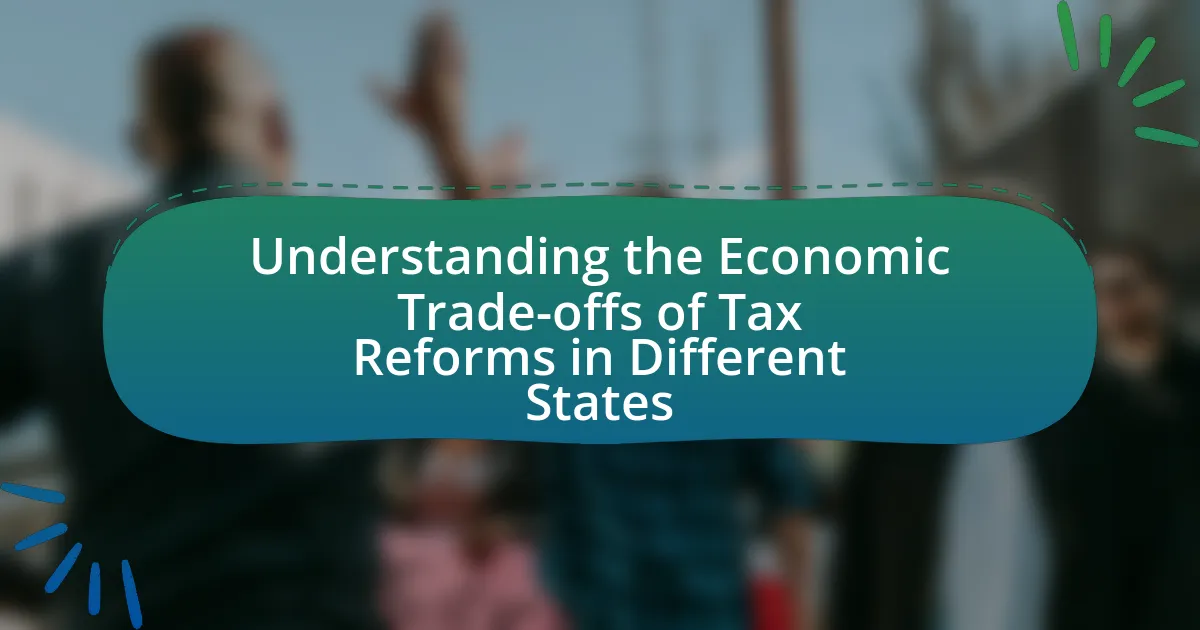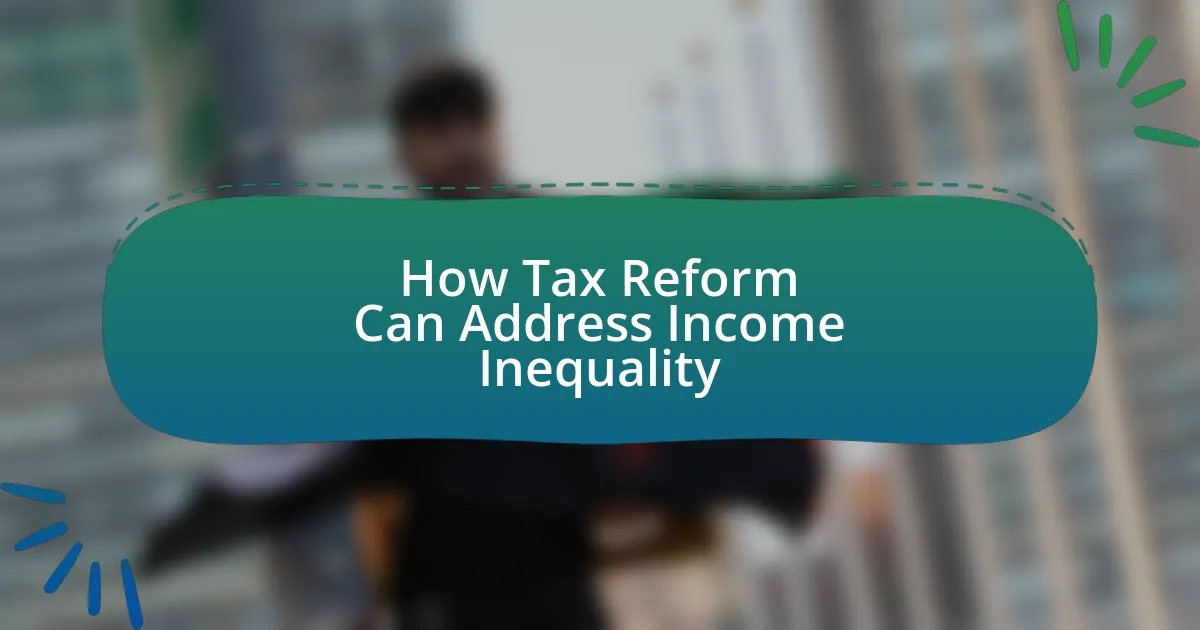The article evaluates the long-term economic effects of recent tax cuts, particularly focusing on the Tax Cuts and Jobs Act of 2017 in the United States. It discusses how tax cuts can stimulate economic growth by increasing consumer spending and business investment, while also highlighting potential drawbacks such as rising budget deficits and exacerbated income inequality. The article examines the mechanisms through which tax cuts influence economic performance, compares recent tax cuts to historical ones, and analyzes the impact of demographic changes and government policies on their effectiveness. Key factors influencing the sustainability and outcomes of tax cuts are also addressed, providing a comprehensive overview of their implications for the economy.
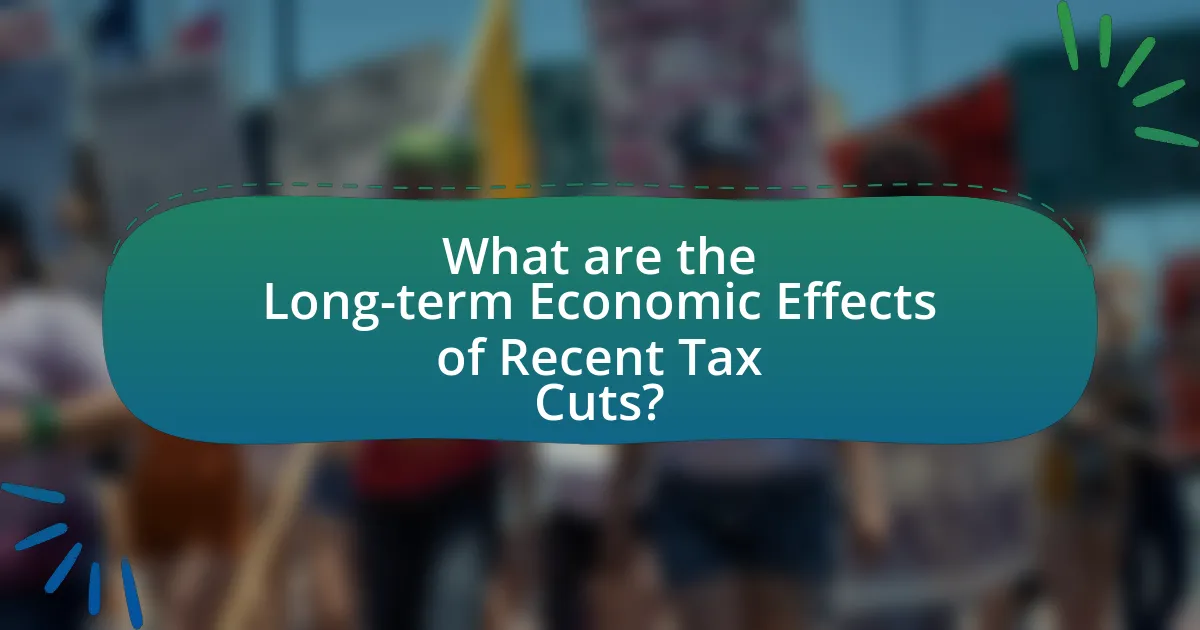
What are the Long-term Economic Effects of Recent Tax Cuts?
Recent tax cuts can lead to increased economic growth, primarily by boosting consumer spending and business investment. When individuals and corporations retain more of their income, they are likely to spend or invest that money, which can stimulate demand for goods and services. For instance, the Tax Cuts and Jobs Act of 2017 in the United States resulted in a significant reduction in corporate tax rates, which incentivized companies to invest in capital and expand operations. According to the Congressional Budget Office, this act is projected to increase GDP growth in the long term by approximately 0.7% annually. Additionally, tax cuts can enhance job creation as businesses expand, leading to lower unemployment rates. However, the long-term effects can also include increased budget deficits if tax cuts are not offset by spending reductions, potentially leading to higher interest rates over time.
How do tax cuts influence overall economic growth?
Tax cuts generally stimulate overall economic growth by increasing disposable income for individuals and businesses, leading to higher consumer spending and investment. When individuals retain more of their earnings, they tend to spend more on goods and services, which boosts demand in the economy. For instance, the Tax Cuts and Jobs Act of 2017 in the United States resulted in a significant reduction in corporate tax rates, which incentivized businesses to invest in expansion and hiring. According to the U.S. Bureau of Economic Analysis, GDP growth accelerated to 4.2% in the second quarter of 2018, partly attributed to these tax cuts. Additionally, lower tax burdens can enhance business profitability, encouraging firms to reinvest in their operations, further driving economic growth.
What are the mechanisms through which tax cuts stimulate growth?
Tax cuts stimulate growth primarily through increased disposable income, which enhances consumer spending and investment. When individuals and businesses pay less in taxes, they have more capital available for consumption or reinvestment. This increase in spending can lead to higher demand for goods and services, prompting businesses to expand production and hire more employees.
Additionally, tax cuts can incentivize businesses to invest in capital projects, such as new equipment or technology, which can improve productivity. For instance, the Tax Cuts and Jobs Act of 2017 in the United States reduced the corporate tax rate from 35% to 21%, leading to a reported increase in business investment by 6.2% in the following year, according to the Bureau of Economic Analysis.
Furthermore, tax cuts can enhance economic confidence, encouraging both consumers and businesses to spend and invest more, which can lead to sustained economic growth over time.
How do tax cuts affect consumer spending and investment?
Tax cuts increase consumer spending and investment by providing individuals and businesses with more disposable income. When consumers have lower tax burdens, they tend to spend more on goods and services, which stimulates demand in the economy. For instance, a study by the Congressional Budget Office found that a reduction in personal income tax rates can lead to a significant increase in consumer spending, as households allocate a portion of their tax savings to consumption.
Additionally, businesses benefit from tax cuts through increased cash flow, allowing them to invest in expansion, hire more employees, and improve productivity. Research from the National Bureau of Economic Research indicates that corporate tax cuts can lead to higher capital investment, as firms utilize their increased profits to purchase new equipment and technology. This cycle of increased consumer spending and business investment can contribute to overall economic growth.
What are the potential drawbacks of tax cuts on the economy?
Tax cuts can lead to increased budget deficits, which may negatively impact the economy. When governments reduce tax revenues, they often face challenges in funding essential services and programs, leading to cuts in public spending. For instance, the Tax Cuts and Jobs Act of 2017 in the United States resulted in a projected increase in the federal deficit by approximately $1.9 trillion over ten years, according to the Congressional Budget Office. Additionally, tax cuts can exacerbate income inequality, as wealthier individuals typically benefit more than lower-income groups, potentially leading to reduced consumer spending and economic growth. Studies have shown that when wealth is concentrated, overall demand in the economy may decline, hindering long-term economic stability.
How can tax cuts lead to budget deficits?
Tax cuts can lead to budget deficits by reducing government revenue without a corresponding decrease in spending. When tax rates are lowered, the immediate effect is a decrease in the amount of money the government collects from individuals and businesses. For example, the Tax Cuts and Jobs Act of 2017 in the United States resulted in an estimated revenue loss of $1.5 trillion over ten years. If government expenditures remain constant or increase, the gap between revenue and spending widens, resulting in budget deficits. This situation can necessitate borrowing, further exacerbating the deficit over time.
What impact do tax cuts have on income inequality?
Tax cuts generally exacerbate income inequality. Research indicates that tax cuts disproportionately benefit higher-income individuals and corporations, leading to a widening income gap. For instance, a study by the Institute on Taxation and Economic Policy found that the Tax Cuts and Jobs Act of 2017 primarily favored the wealthiest Americans, with the top 1% receiving an average tax cut of $51,000, while the bottom 20% received an average cut of only $60. This disparity in benefits contributes to a concentration of wealth among the affluent, thereby increasing income inequality over time.
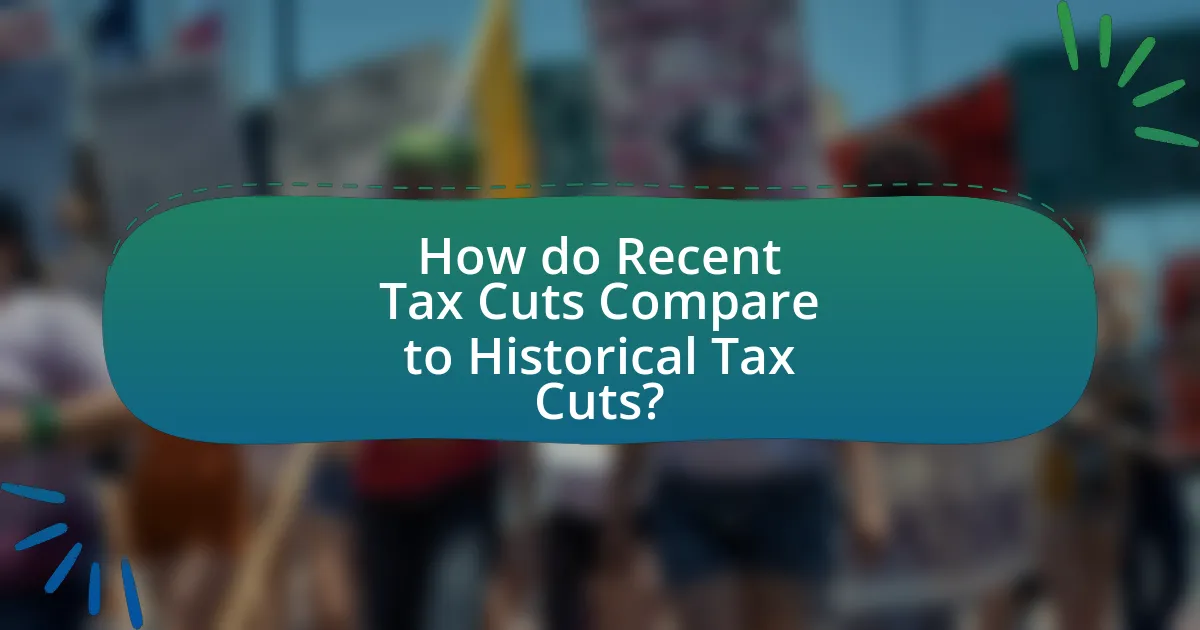
How do Recent Tax Cuts Compare to Historical Tax Cuts?
Recent tax cuts, such as those implemented in the United States in 2017, generally provide larger reductions for corporations and high-income earners compared to historical tax cuts, which often aimed for broader middle-class relief. For instance, the Tax Cuts and Jobs Act of 2017 reduced the corporate tax rate from 35% to 21%, a significant decrease that contrasts with the 1986 Tax Reform Act, which lowered the top individual tax rate from 50% to 28% while maintaining a more equitable distribution of benefits across income levels. Historical tax cuts, like those in the 1960s and 1980s, often included measures aimed at stimulating middle-class consumption, whereas recent cuts have been criticized for disproportionately benefiting wealthier individuals and corporations, as evidenced by the Congressional Budget Office’s analysis showing that the top 20% of earners received over 60% of the tax benefits from the 2017 cuts.
What lessons can be learned from past tax cut policies?
Past tax cut policies demonstrate that while they can stimulate short-term economic growth, their long-term effects often lead to increased budget deficits and income inequality. For instance, the 2001 and 2003 tax cuts in the United States resulted in a temporary boost in consumer spending and investment; however, they also contributed to a significant increase in the federal deficit, which reached $1.4 trillion by 2009. Additionally, studies indicate that the benefits of tax cuts disproportionately favor higher-income individuals, exacerbating income inequality. The Tax Policy Center reported that in 2018, the Tax Cuts and Jobs Act primarily benefited the top 20% of earners, highlighting the need for careful consideration of equity in future tax policies.
How did previous tax cuts affect economic performance over time?
Previous tax cuts generally stimulated economic performance in the short term but had mixed long-term effects. For instance, the Tax Cuts and Jobs Act of 2017 led to a temporary boost in GDP growth, with the economy growing by 2.9% in 2018, compared to 2.4% in 2017. However, over time, the benefits diminished, and by 2020, GDP growth slowed to 3.4%, indicating that the initial positive impact was not sustained. Additionally, tax cuts often increased budget deficits; the Congressional Budget Office projected that the 2017 tax cuts would add $1.9 trillion to the deficit over a decade, which can hinder long-term economic growth by limiting government investment in infrastructure and education. Thus, while tax cuts can provide immediate economic stimulus, their long-term efficacy is often constrained by rising deficits and diminishing returns on growth.
What were the long-term outcomes of historical tax cuts on public services?
Historical tax cuts have often led to reduced funding for public services over the long term. For instance, the tax cuts implemented in the United States during the Reagan administration in the 1980s resulted in significant budget deficits, which subsequently prompted cuts to social programs, education, and infrastructure. A study by the Center on Budget and Policy Priorities indicated that states that enacted substantial tax cuts experienced declines in public service funding, leading to increased reliance on federal assistance and a deterioration in service quality. Additionally, research from the Economic Policy Institute highlighted that tax cuts disproportionately benefited higher-income individuals while contributing to the underfunding of essential public services, such as healthcare and education, which are critical for long-term economic stability and growth.
How do different economic conditions affect the impact of tax cuts?
Different economic conditions significantly influence the impact of tax cuts, as their effectiveness varies based on factors such as economic growth, unemployment rates, and inflation. In a robust economy, tax cuts can stimulate consumer spending and investment, leading to increased economic activity; for instance, the 2017 Tax Cuts and Jobs Act in the U.S. coincided with a period of low unemployment and steady growth, resulting in a boost to GDP. Conversely, during a recession, tax cuts may have a limited effect if consumer confidence is low and demand is weak, as seen in the aftermath of the 2008 financial crisis when tax cuts did not significantly spur recovery. Additionally, high inflation can erode the benefits of tax cuts, as rising prices may offset any increase in disposable income. Thus, the context of the economy plays a crucial role in determining the overall effectiveness of tax cuts.
What role does the economic cycle play in the effectiveness of tax cuts?
The economic cycle significantly influences the effectiveness of tax cuts by determining the context in which they are implemented. During economic expansions, tax cuts can stimulate consumer spending and investment, leading to increased economic growth. For instance, the Tax Cuts and Jobs Act of 2017 coincided with a period of economic growth, resulting in a GDP increase of 2.9% in 2018. Conversely, during economic downturns, tax cuts may have a limited impact as consumers and businesses are less likely to spend or invest due to uncertainty. Historical data shows that tax cuts during recessions, such as those in the early 2000s, had mixed results, often requiring complementary fiscal measures to be effective. Thus, the economic cycle plays a crucial role in shaping the outcomes of tax cuts.
How do tax cuts perform during recessions versus expansions?
Tax cuts generally perform differently during recessions compared to expansions. During recessions, tax cuts can stimulate economic activity by increasing disposable income, leading to higher consumer spending and potentially mitigating the downturn; for example, the Economic Stimulus Act of 2008 provided tax rebates that aimed to boost consumer spending during the financial crisis. In contrast, during expansions, tax cuts may lead to increased deficits without significantly enhancing growth, as seen in the 2001 tax cuts, which did not result in substantial economic acceleration despite lower tax rates. Thus, the effectiveness of tax cuts is context-dependent, with stronger impacts observed during economic downturns than during periods of growth.
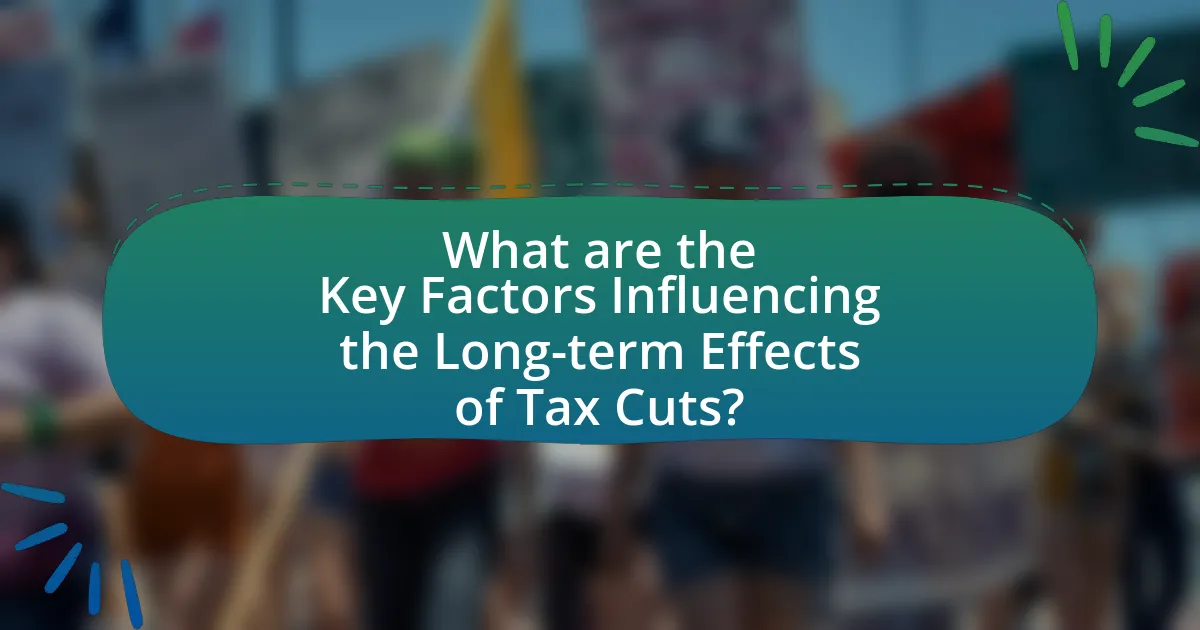
What are the Key Factors Influencing the Long-term Effects of Tax Cuts?
The key factors influencing the long-term effects of tax cuts include the overall economic environment, the structure of the tax cuts, and the behavioral responses of individuals and businesses. The economic environment, characterized by growth rates and inflation, determines how tax cuts impact consumer spending and investment. The structure of tax cuts, whether they are targeted or broad-based, affects their effectiveness in stimulating economic activity; for instance, targeted cuts may lead to more significant investment in specific sectors. Behavioral responses, such as changes in savings and spending patterns, also play a crucial role; studies show that tax cuts can lead to increased disposable income, which may boost consumption and economic growth over time. Historical data from the Tax Policy Center indicates that tax cuts can lead to varying long-term growth rates depending on these factors, highlighting their importance in evaluating economic outcomes.
How do demographic changes affect the outcomes of tax cuts?
Demographic changes significantly influence the outcomes of tax cuts by altering the distribution of income and consumption patterns within a population. For instance, an aging population may lead to increased healthcare spending and reduced labor force participation, which can diminish the stimulative effects of tax cuts on economic growth. According to the U.S. Census Bureau, the proportion of individuals aged 65 and older is projected to rise from 16% in 2020 to 21% by 2040, indicating a shift in consumer behavior that could affect overall economic activity. Additionally, younger demographics, such as millennials and Gen Z, tend to prioritize different spending habits, focusing more on technology and sustainability, which can shift the effectiveness of tax cuts aimed at stimulating traditional sectors. Thus, understanding demographic trends is crucial for policymakers to predict and evaluate the long-term economic effects of tax cuts accurately.
What is the relationship between population growth and tax cut effectiveness?
Population growth positively influences tax cut effectiveness by expanding the tax base and increasing overall economic activity. As the population grows, more individuals enter the workforce, leading to higher income levels and consumption, which in turn generates greater tax revenue. For instance, the Congressional Budget Office reported that a 1% increase in population can lead to a corresponding increase in GDP, thereby enhancing the effectiveness of tax cuts aimed at stimulating economic growth. This relationship indicates that tax cuts may yield more significant benefits in a growing population, as the increased economic activity can offset the initial revenue loss from the cuts.
How do age demographics influence spending patterns post-tax cuts?
Age demographics significantly influence spending patterns post-tax cuts, as different age groups prioritize their expenditures based on life stages and financial stability. For instance, younger individuals, often in the early stages of their careers, may allocate tax savings towards education, housing, or consumer goods, reflecting a focus on establishing their financial foundation. In contrast, older adults, particularly those nearing retirement, may prioritize savings and healthcare expenditures, indicating a shift towards securing their financial future and managing health-related costs.
Research from the Federal Reserve indicates that households led by younger adults tend to spend a higher percentage of their income on discretionary items, while older households are more likely to save or invest their tax savings. This divergence in spending behavior illustrates how age demographics shape economic responses to tax policy changes, ultimately affecting overall economic growth and consumption patterns.
What role does government policy play in shaping the effects of tax cuts?
Government policy significantly influences the effects of tax cuts by determining how those cuts are implemented and integrated into the broader economic framework. For instance, policies that accompany tax cuts, such as spending programs or regulatory changes, can either amplify or mitigate the intended economic benefits. Historical examples, such as the Tax Cuts and Jobs Act of 2017 in the United States, illustrate that the government’s approach to fiscal policy, including its decisions on public spending and investment, directly impacts economic growth, job creation, and income distribution following tax reductions. Studies have shown that when tax cuts are paired with strategic government investments, the positive effects on the economy are more pronounced, as evidenced by a 2019 report from the Congressional Budget Office, which indicated that targeted tax cuts can lead to increased GDP growth when aligned with effective government spending policies.
How do regulatory changes interact with tax cuts to influence the economy?
Regulatory changes and tax cuts interact to influence the economy by altering business costs and investment incentives. When tax cuts reduce the financial burden on businesses, they often have more capital available for expansion and hiring. Concurrently, regulatory changes can either facilitate or hinder this process; for instance, deregulation may lower compliance costs, further enhancing profitability and encouraging investment. Historical data from the Tax Cuts and Jobs Act of 2017 shows that businesses responded to tax reductions by increasing capital expenditures, which was supported by simultaneous regulatory rollbacks in various sectors. This combination can lead to economic growth, as evidenced by a rise in GDP following these policy changes.
What are the implications of fiscal policy on the sustainability of tax cuts?
Fiscal policy significantly influences the sustainability of tax cuts by determining government revenue and expenditure levels. When a government implements tax cuts, it reduces its revenue, which can lead to budget deficits if not offset by spending cuts or increased economic growth. For instance, the Tax Cuts and Jobs Act of 2017 in the United States resulted in a substantial reduction in corporate tax rates, but it also raised concerns about long-term deficits, as the Congressional Budget Office projected an increase in the federal deficit by $1.9 trillion over ten years. Sustainable tax cuts require a balanced approach in fiscal policy, ensuring that the reduction in taxes does not compromise essential public services or lead to unsustainable debt levels.
What best practices should policymakers consider when implementing tax cuts?
Policymakers should prioritize transparency and comprehensive analysis when implementing tax cuts. Transparency ensures that the public understands the rationale and expected outcomes of tax cuts, fostering trust and support. Comprehensive analysis involves evaluating the potential economic impacts, including effects on revenue, public services, and income inequality. Historical evidence, such as the 2017 Tax Cuts and Jobs Act in the United States, illustrates that without careful consideration of these factors, tax cuts can lead to budget deficits and reduced funding for essential services. Additionally, policymakers should consider phased implementation to assess impacts gradually and adjust as necessary, ensuring that the benefits of tax cuts are realized without compromising fiscal stability.
